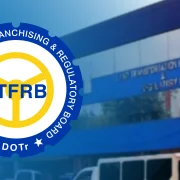Avoiding Edsa’s traffic nightmare

No matter what contingency plans the government will come up with following the Edsa rehabilitation project starting in the middle of June, traffic will surely become worse. “We know that there will be heavy traffic. We will not deny that. Our countrymen need to understand that. But it’s not that the government will not do anything. The President said that we need to somehow ease the inconvenience to be experienced by our countrymen,” Transportation Secretary Vince Dizon admitted.
The expected traffic nightmare will not only be along the busy thoroughfare that cuts through several Metro Manila cities, but also on adjacent streets that motorists will use to avoid Edsa. This is expected to worsen further once a portion of the 60-year-old Guadalupe Bridge, which connects Makati and Mandaluyong along Edsa, is temporarily closed by October for rehabilitation.
While authorities have yet to disclose its traffic management plan, officials cited a few measures to address the heavy traffic during Edsa’s rehabilitation. Public Works Secretary Manuel Bonoan said among the arrangements they are finalizing is to identify alternate routes that motorists can use. However, these measures will succeed only if the Metro Manila Development Authority (MMDA) and the Department of Transportation (DOTr) work doubly hard to unclog side streets of thousands of parked vehicles to make these viable alternate routes for motorists.
Work from home
The DOTr is also proposing the use of Skyway Stage 3 as an alternate route and Dizon said he will ask its operator to suspend toll collection for the segment to be used by motorists in avoiding Edsa. Again, the government must prod the Skyway’s operator to address the nagging problems bugging the Skyway, including its poor RFID readers that force motorists to pile up at entry and exit points, and the snail-paced traffic flow on both the on- and off-ramps of the elevated road.
Among the measures identified include adding trains at the Metro Rail Transit Line 3 (MRT 3) to accommodate more passengers. Both the DOTr and the MMDA also assured the public that the Edsa Busway will remain in operation even while the Edsa rehab is in full swing, which will service thousands of commuters.
Theoretically, the more effective steps will be those that will substantially reduce the volume of vehicles on the road. In this regard, the government and the private sector need to look into letting as many of their staff as possible to work from home for more days than they are currently allowed. This will lower the number of vehicles on the road as well as the volume of commuters needing a ride, especially during regular working days.
Odd-even number scheme
The MMDA can also revisit its recommendation for national government agencies in Metro Manila to adopt the 7 a.m. to 4 p.m. work schedule to help ease traffic. It cited a study showing that implementing the modified work schedule among local government units in the capital region helped improve traffic flow and shortened travel time by 10.2 percent, while travel speed increased by 20.7 percent on roads near the city and municipal halls.
A more drastic measure is to implement the odd-even number scheme in lieu of the current number coding system as it will remove far more vehicles off the streets. Under the odd-even scheme, half or 50 cars will be off the roads each day. Given the MMDA’s latest count of about 464,000 vehicles using Edsa alone on a single day, the odd-even scheme will effectively remove 232,000 vehicles every day of the week. The same will be true for the designated alternate routes. The government can address the opposition to this unpopular measure by convincing employers, both in the government and the private sector, to let their affected employees work from home on those days when their vehicles are not allowed on the road.
Radical solutions
Estimated to last 17 months, the people can expect the government to stay within target or even finish the P7.3-billion Edsa rehabilitation project much earlier. One reason is that the Department of Public Works and Highways (DPWH) has been directed to fast-track it to ensure Edsa is ready ahead of the Philippines’ hosting of the Association of Southeast Asian Nations (Asean) Summit next year. The DPWH has also promised that road works will be done 24 hours a day to speed up its completion. Last week, Public Works Secretary Manuel Bonoan said they are prioritizing both lanes of the Edsa segment from Pasay City to Shaw Boulevard, where the summit’s concentration will be held, and expect to finish this by the end of this year.
Dire problems such as the horrendous traffic to be caused by the Edsa rehabilitation project require radical solutions. Allowing more people to work from home and adopting the odd-even number coding system will be the best measures in reducing the volume of vehicles on the streets and of commuters needing public transport. Everyone has to sacrifice for a long-overdue project that is expected to make travel much more pleasant once finished.





















